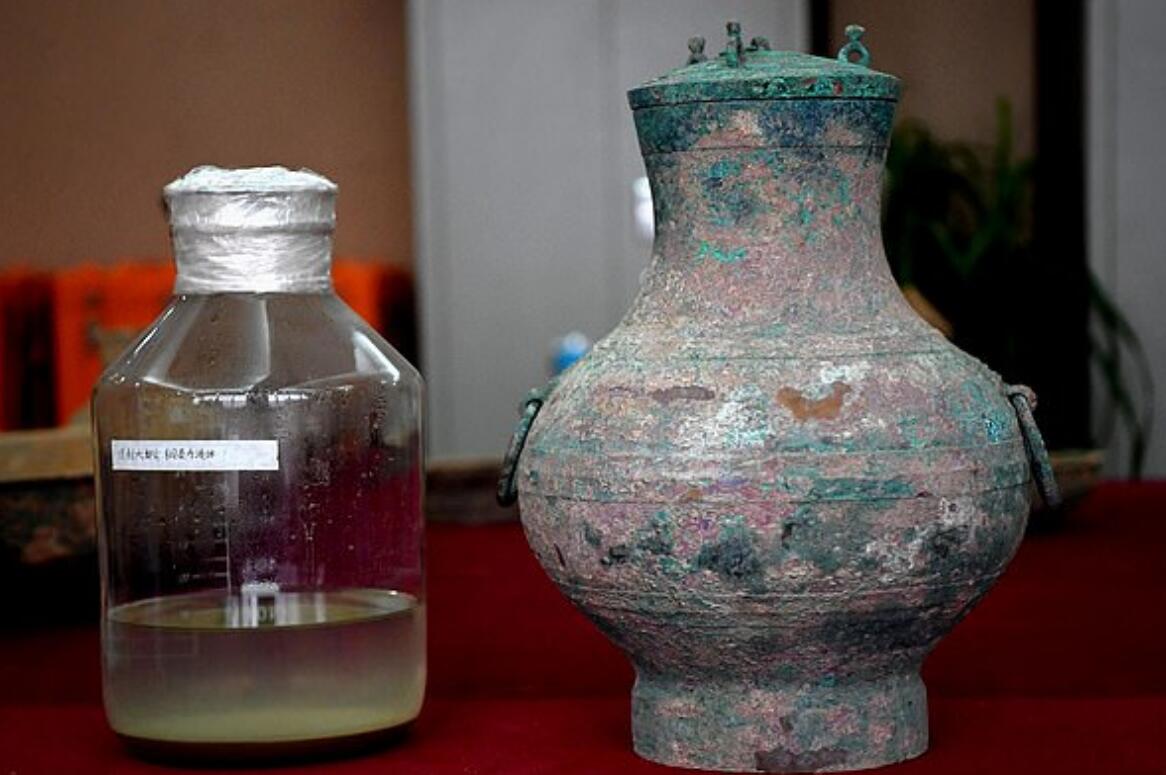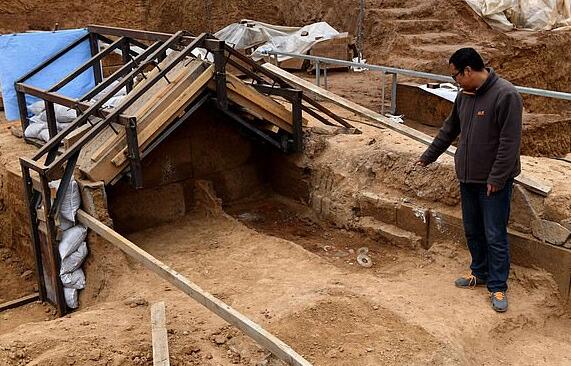Bronze pot found in a 2,000-year-old burial tomb contains legendary brew used by the rich to try and cheat death
A fabled 'Elixir of immortality' mentioned throughout ancient Chinese texts has been discovered in a bronze pot hidden inside in a 2,000-year-old burial tomb, experts say.
China's rich and powerful searched for a magical potion over thousands of years that would bring them external life.
The mythical quest for the non-existent cure was inevitably unsuccessful and instead yielded a drink which is thought to have spelled like alcohol.

Archaeologists in central China's Henan province said have found a bronze pot which they believe contains a sampleof the legendary 'Elixir of Life' referred to in ancient Chinese text
The container was unearthed in the tomb of the Western Han Dynasty (202 BC-8 AD) noble family and contains six pints (3.5 litres) of the concoction.
'It is the first time that mythical "immortality medicines" have been found in China,' said Shi Jiazhen, head of the Institute of Cultural Relics and Archaeology in Luoyang, where the burial site is being excavated.
'The liquid is of significant value for the study of ancient Chinese thoughts on achieving immortality and the evolution of Chinese civilisation'.
Archaeologists initially thought that the six pints (3.5 litres) may be liquor as it gave off an alcoholic aroma.
A large number of colour-painted clay pots, jadeware and bronze artefacts were also unearthed from the tomb, which covers 2260 square fee (210 sq m).

The liquid, unearthed from the tomb of a noble family in Western Han Dynasty (202 BC-8 AD) tomb contains 3.5 litres of potassium salts that have now been confirmed by lab testing
The remains of the tomb's occupant have also been preserved.
Pan Fusheng, an archaeologist on the project, added: 'The tomb provides valuable material for study of the life of Western Han nobles as well as the funeral rituals and customs of the period'.
Lab results revealed the potion is largely made up of potassium nitrate and alunite which are not poisonous but are nevertheless used in pesticides, fertilisers and rocket propellants.
Cases of high ranking officials and emperors drinking toxic elixirs are not uncommon in China.
The most famous of these being that of the First Emperor of China Qin Shihuang, who sent an expedition to find the legendary island which contained high quantities of the liquid.

Pan Fusheng, an archaeologist on the project, said: 'The tomb provides valuable material for study of the life of Western Han nobles as well as the funeral rituals and customs of the period
The emperor was known to believe the elixir came in the form of silver mercury and supposedly died from drinking the poison, like many other historical figures.
A scan of the emperor's main burial chamber previously revealed higher than usual levels of mercury and his tomb has been described in historical text as containing 'rivers and lakes of mercury'.

